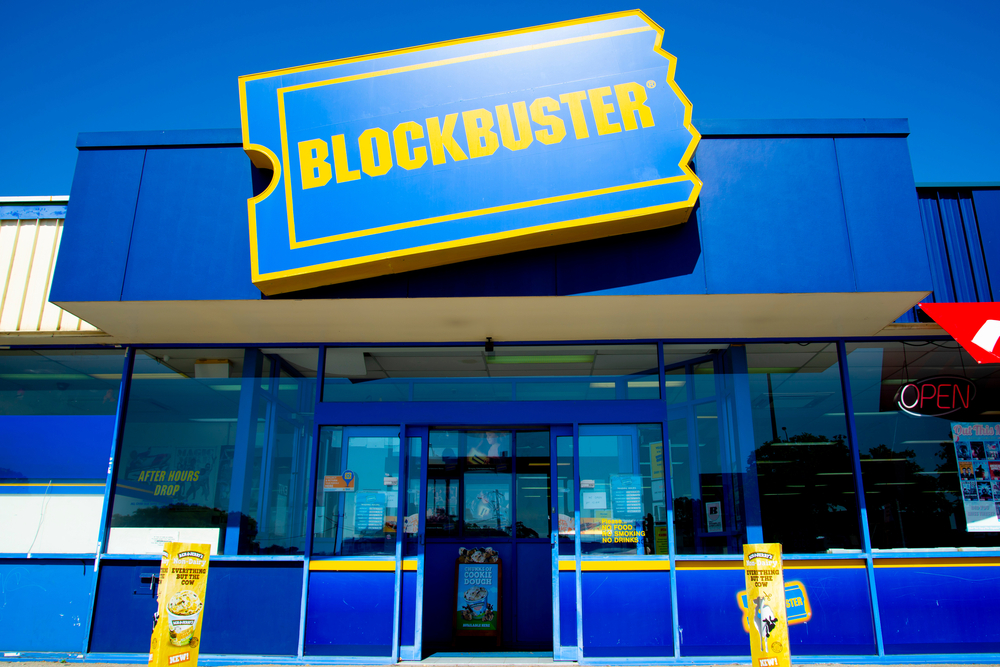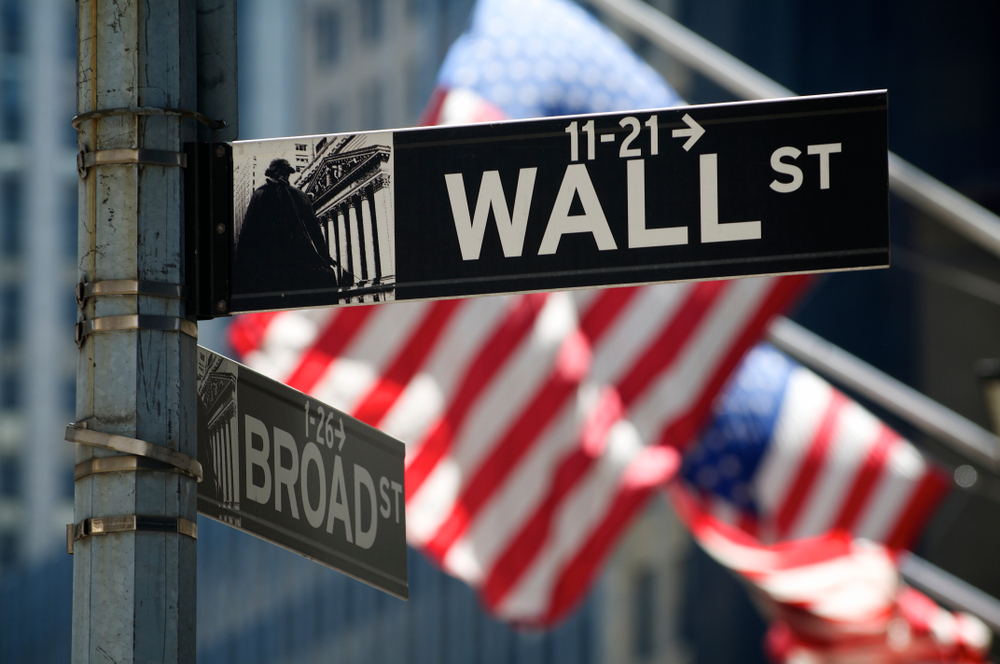Investing in the stock market is often touted as a way to grow wealth over time, but it also comes with its fair share of risks. Speculation, market trends, and the promise of innovative products can sometimes inflate stock values beyond their sustainable worth. In the past, we’ve seen numerous instances where overhyped stocks have taken a nosedive, leaving investors in the lurch. Here are 15 such examples where stocks that seemed like golden opportunities crashed and burned, teaching us valuable lessons about market volatility and the importance of due diligence.
1. The Fluctuating Fortunes Of Pets.com

Pets.com became the poster child of the dot-com bubble burst. Launched in 1998, the company promised to revolutionize the pet supply market with its online presence. Investors were dazzled by the prospect of a digital future and pumped millions into the company. However, despite an aggressive marketing campaign, including the famous sock puppet mascot, the business model proved unsustainable.
The company was hemorrhaging money due to high operational costs and low customer retention. By 2000, it was apparent that Pets.com couldn’t compete with more established, brick-and-mortar pet stores, leading to its demise. According to Schiff’s Sovereign, the company went from IPO to liquidation in just 268 days. This saga serves as a reminder that even with substantial branding, a viable business model is crucial.
2. The Rise And Fall Of Webvan

Webvan was another casualty of the dot-com bust, aiming to transform grocery shopping with its online delivery service. Initially, investors were enamored with the convenience of ordering groceries online, coupled with Webvan’s ambitious plans to operate a nationwide delivery network. According to Forbes, the company raised hundreds of millions in capital and went public in 1999, with a market cap soaring over $8 billion. Yet, the infrastructure required for such an expansive network quickly drained resources, and customer demand was insufficient to justify the costs.
By the time Webvan filed for bankruptcy in 2001, it had become a cautionary tale of overexpansion and overspending. The company’s collapse highlighted the importance of scaling operations sustainably and understanding consumer readiness for new technologies. Interestingly, the concept was ahead of its time, as today’s market leaders, like Amazon Fresh, have successfully adopted similar models but with a much more measured approach.
3. The Unraveling Of Theranos

Theranos was once heralded as a groundbreaking biotech company, with promises to revolutionize blood testing through its proprietary technology. Founded by Elizabeth Holmes, the company attracted significant media attention and a multibillion-dollar valuation despite its unproven technology. According to BBC, Theranos claimed its devices could run comprehensive tests with just a few drops of blood—a potential game-changer for medical diagnostics.
However, investigative journalism revealed that the technology didn’t work as claimed, leading to regulatory scrutiny and legal challenges. The fallout from these revelations was swift and severe, with investors losing significant sums and the company’s value plummeting to zero. The Theranos saga underscores the critical importance of transparency, ethical practices, and scientific validation in the pharma and biotech industries. It also highlights the need for investors to be wary of companies operating in opaque environments.
4. The Blackberry’s Epic Failures

Blackberry was once synonymous with cutting-edge mobile communication, dominating the smartphone market in the early 2000s. Its secure email capabilities and QWERTY keyboard were beloved by professionals, making it the go-to device for corporate communications. However, Blackberry struggled to adapt to the touch-screen revolution ushered in by the Apple iPhone in 2007. The company’s reluctance to embrace a full touchscreen interface and its clunky operating system left it trailing behind competitors.
Additionally, Blackberry’s overreliance on its Enterprise Server technology failed to capture the growing consumer market, which was increasingly drawn to multimedia capabilities. As Android and iOS platforms gained dominance, Blackberry’s market share dwindled, resulting in a drastic fall in its stock price. The company’s inability to innovate and anticipate consumer preferences serves as a lesson in staying agile in a rapidly evolving tech landscape.
5. The Disappointing Demise Of Kodak

Kodak was once a titan in the film photography industry, with a brand synonymous with capturing life’s precious moments. However, despite being a pioneer in the development of digital photography technology, Kodak failed to capitalize on this innovation. The reluctance to shift focus from film to digital, fearing the cannibalization of their film market, cost them their leading position.
As digital photography took off, Kodak’s film sales plummeted, and the company’s late entry into the digital market couldn’t compete with more agile players. By 2012, the company filed for bankruptcy, having failed to adapt to the new era of photography. Kodak’s story is a stark reminder of the dangers of complacency and the importance of embracing change. It highlights the need for businesses to be proactive rather than reactive to technological advancements.
6. The Slippery Slope Of Enron

Enron’s collapse remains one of the most infamous corporate scandals in history, with the energy company once hailed as an innovator in trading. Enron’s stock soared in the late 1990s as the company diversified its business model and entered new markets. However, the company’s success was built on a web of accounting fraud and deceptive practices designed to inflate its financial health.
When these practices were exposed in 2001, Enron’s stock plummeted, and the company filed for bankruptcy, erasing billions in shareholder value. The scandal resulted in significant regulatory changes, including the Sarbanes-Oxley Act, aimed at improving corporate transparency. Enron’s downfall serves as a stark warning about the perils of corporate greed and the importance of ethical governance. It also highlights the critical role of regulatory oversight in maintaining market integrity.
7. The Nortel Networks’ Network Failure

Nortel Networks was a telecommunications giant in the late 1990s, riding high on the wave of internet expansion. The company’s stock price soared as it became a leader in producing network equipment and innovating in the broadband space. However, Nortel’s aggressive expansion and acquisition strategy were unsustainable, leading to financial instability.
The company was further plagued by accounting scandals and mismanagement, which eroded investor confidence. By 2009, Nortel filed for bankruptcy, marking the end of a once-dominant industry player. The Nortel debacle highlights the dangers of rapid expansion without careful financial planning and ethical management. It serves as a cautionary tale for companies looking to grow without strong internal controls in place.
8. The Death Of Blockbuster

Blockbuster was once a retail giant in the home video rental market, with stores across the globe. The company thrived in the 1990s but failed to adapt to the digital revolution that transformed media consumption. Blockbuster’s reluctance to embrace online streaming and digital rentals allowed competitors like Netflix to capture the market.
Despite having the opportunity to purchase Netflix in the early 2000s, Blockbuster dismissed the threat posed by emerging digital platforms. As a result, the company’s market share dwindled, and it filed for bankruptcy in 2010. Blockbuster’s downfall illustrates the importance of foresight and embracing technological change in a rapidly evolving industry. It serves as a reminder that even industry leaders are not immune to disruption if they fail to innovate.
9. The Overhyped Hype Of Groupon

Groupon emerged as a popular e-commerce platform in the late 2000s, offering daily deals and discounts. The company went public in 2011 with much fanfare, reaching a market cap of $16 billion at its peak. However, Groupon’s novelty wore off as competition increased, and consumers grew weary of daily deals. Additionally, the company’s business model faced sustainability challenges, with merchants and customers alike expressing dissatisfaction.
Groupon’s stock price plummeted as revenue growth stalled and profitability proved elusive. The company’s struggles highlight the importance of a robust and adaptable business model in the face of changing consumer preferences. Groupon’s experience serves as a lesson in the transient nature of market fads and the need for long-term strategic planning.
1o. The MySpace Social Media Misstep

MySpace was once the leading social media platform, offering users a customizable online presence. Despite its early success, MySpace failed to keep up with technological advancements and changing user preferences. The platform’s cluttered interface and lack of innovation drove users to newer, more streamlined platforms like Facebook.
As user engagement declined, MySpace’s advertising revenue suffered, leading to a significant drop in its valuation. Moreover, strategic missteps and management changes further hindered its ability to compete effectively. By the time the platform was sold to Specific Media in 2011, MySpace had lost its relevance as a social media leader. The MySpace story underscores the importance of continuous innovation and adaptability in the fast-paced world of social media.
11. The Cautionary Tale Of Valeant Pharmaceuticals

Valeant Pharmaceuticals was once a Wall Street darling, known for its aggressive acquisition strategy and cost-cutting measures. The company’s stock soared as it acquired numerous pharmaceutical firms, promising to maximize shareholder value. However, Valeant’s business practices included steep drug price hikes, which drew public and regulatory scrutiny.
Questions about the company’s accounting practices and reliance on specialty pharmacies further eroded confidence. By 2016, Valeant’s stock had plummeted as investigations and lawsuits mounted, leading to a significant loss in market value. The Valeant debacle serves as a warning about the risks of unsustainable business models and unethical practices. It highlights the importance of balancing growth with corporate responsibility and ethical governance.
12. The Nokia Fall From Grace

Nokia was once a global leader in mobile phones, with a reputation for durable and reliable devices. However, the company failed to adapt to the smartphone revolution, losing ground to competitors like Apple and Samsung. Nokia’s reluctance to adopt innovative operating systems and touch-screen technology left it trailing behind the competition.
Despite attempts to catch up, including a partnership with Microsoft, the company struggled to regain its market position. By 2014, Nokia had sold its mobile phone business to Microsoft, marking the end of an era. Nokia’s decline highlights the importance of staying ahead of technological trends and consumer demands. It serves as a reminder of the need for continuous innovation to maintain market relevance.
13. The Turbulent Tale Of General Electric

General Electric (GE) was once a symbol of American industrial might, with a diverse portfolio spanning various sectors. However, strategic missteps and overexpansion led to financial instability and a significant decline in its stock price. GE’s focus on short-term gains and financial engineering masked underlying vulnerabilities in its core businesses.
The company’s aggressive acquisitions and divestitures further strained its financial resources, leading to mounting debt. By the late 2010s, GE faced significant restructuring challenges, resulting in layoffs and asset sales. GE’s turbulent journey underscores the importance of sustainable growth strategies and robust financial management. It highlights the risks of overreliance on financial maneuvers at the expense of core business health.
14. The Fizzling Out Of JCPenney

JCPenney was once a staple of American retail, known for its department stores and broad product offerings. However, the company struggled to adapt to changing consumer preferences and the rise of e-commerce. A series of misaligned strategies, including ill-fated rebranding efforts, alienated core customers and eroded market share.
JCPenney’s inability to modernize its operations and attract new shoppers left it lagging behind competitors like Macy’s and online giants like Amazon. Despite efforts to revitalize the brand, including store closures and management changes, JCPenney filed for bankruptcy in 2020. The company’s decline highlights the importance of understanding consumer trends and adapting to the digital age. It serves as a cautionary tale about the challenges traditional retailers face in the ever-evolving retail landscape.
This article is for informational purposes only and should not be construed as financial advice. Consult a financial professional before making investment or other financial decisions. The author and publisher make no warranties of any kind.








